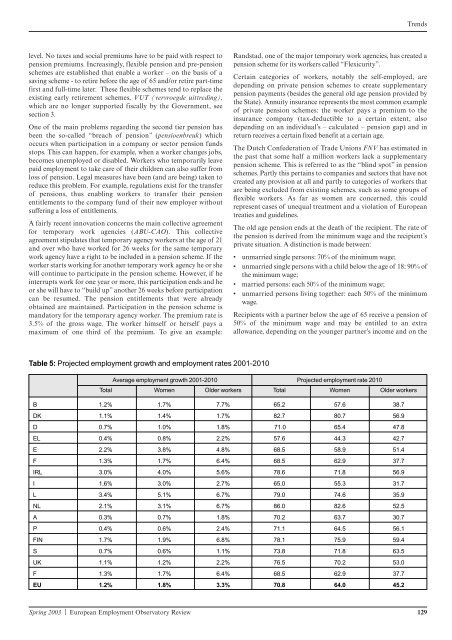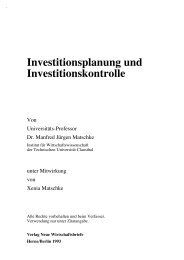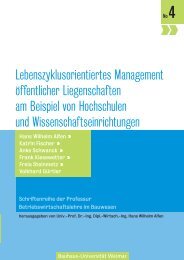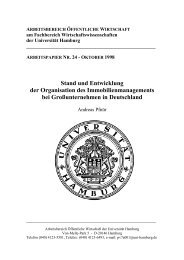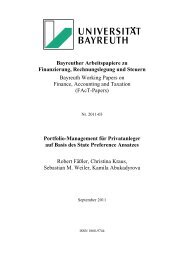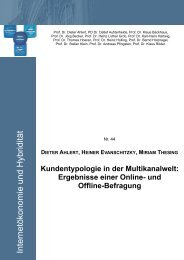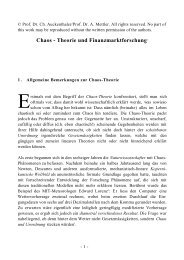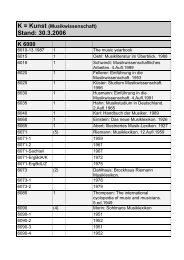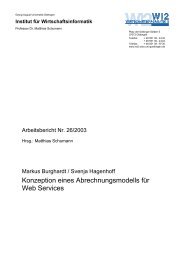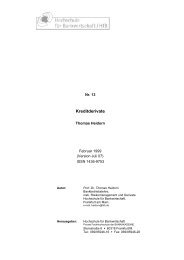FRANCE The
FRANCE The
FRANCE The
Create successful ePaper yourself
Turn your PDF publications into a flip-book with our unique Google optimized e-Paper software.
level. No taxes and social premiums have to be paid with respect to<br />
pension premiums. Increasingly, flexible pension and pre-pension<br />
schemes are established that enable a worker – on the basis of a<br />
saving scheme - to retire before the age of 65 and/or retire part-time<br />
first and full-time later. <strong>The</strong>se flexible schemes tend to replace the<br />
existing early retirement schemes, VUT (vervroegde uittreding),<br />
which are no longer supported fiscally by the Government, see<br />
section 3.<br />
One of the main problems regarding the second tier pension has<br />
been the so-called “breach of pension” (pensioenbreuk) which<br />
occurs when participation in a company or sector pension funds<br />
stops. This can happen, for example, when a worker changes jobs,<br />
becomes unemployed or disabled. Workers who temporarily leave<br />
paid employment to take care of their children can also suffer from<br />
loss of pension. Legal measures have been (and are being) taken to<br />
reduce this problem. For example, regulations exist for the transfer<br />
of pensions, thus enabling workers to transfer their pension<br />
entitlements to the company fund of their new employer without<br />
suffering a loss of entitlements.<br />
A fairly recent innovation concerns the main collective agreement<br />
for temporary work agencies (ABU-CAO). This collective<br />
agreement stipulates that temporary agency workers at the age of 21<br />
and over who have worked for 26 weeks for the same temporary<br />
work agency have a right to be included in a pension scheme. If the<br />
worker starts working for another temporary work agency he or she<br />
will continue to participate in the pension scheme. However, if he<br />
interrupts work for one year or more, this participation ends and he<br />
or she will have to “build up” another 26 weeks before participation<br />
can be resumed. <strong>The</strong> pension entitlements that were already<br />
obtained are maintained. Participation in the pension scheme is<br />
mandatory for the temporary agency worker. <strong>The</strong> premium rate is<br />
3.5% of the gross wage. <strong>The</strong> worker himself or herself pays a<br />
maximum of one third of the premium. To give an example:<br />
Table 5: Projected employment growth and employment rates 2001-2010<br />
Spring 2003 | European Employment Observatory Review 129<br />
Trends<br />
Randstad, one of the major temporary work agencies, has created a<br />
pension scheme for its workers called “Flexicurity”.<br />
Certain categories of workers, notably the self-employed, are<br />
depending on private pension schemes to create supplementary<br />
pension payments (besides the general old age pension provided by<br />
the State). Annuity insurance represents the most common example<br />
of private pension schemes: the worker pays a premium to the<br />
insurance company (tax-deductible to a certain extent, also<br />
depending on an individual’s – calculated – pension gap) and in<br />
return receives a certain fixed benefit at a certain age.<br />
<strong>The</strong> Dutch Confederation of Trade Unions FNV has estimated in<br />
the past that some half a million workers lack a supplementary<br />
pension scheme. This is referred to as the “blind spot” in pension<br />
schemes. Partly this pertains to companies and sectors that have not<br />
created any provision at all and partly to categories of workers that<br />
are being excluded from existing schemes, such as some groups of<br />
flexible workers. As far as women are concerned, this could<br />
represent cases of unequal treatment and a violation of European<br />
treaties and guidelines.<br />
<strong>The</strong> old age pension ends at the death of the recipient. <strong>The</strong> rate of<br />
the pension is derived from the minimum wage and the recipient’s<br />
private situation. A distinction is made between:<br />
• unmarried single persons: 70% of the minimum wage;<br />
• unmarried single persons with a child below the age of 18: 90% of<br />
the minimum wage;<br />
• married persons: each 50% of the minimum wage;<br />
• unmarried persons living together: each 50% of the minimum<br />
wage.<br />
Recipients with a partner below the age of 65 receive a pension of<br />
50% of the minimum wage and may be entitled to an extra<br />
allowance, depending on the younger partner’s income and on the<br />
Average employment growth 2001-2010 Projected employment rate 2010<br />
Total Women Older workers Total Women Older workers<br />
B 1.2% 1.7% 7.7% 65.2 57.6 38.7<br />
DK 1.1% 1.4% 1.7% 82.7 80.7 56.9<br />
D 0.7% 1.0% 1.8% 71.0 65.4 47.8<br />
EL 0.4% 0.8% 2.2% 57.6 44.3 42.7<br />
E 2.2% 3.8% 4.8% 68.5 58.9 51.4<br />
F 1.3% 1.7% 6.4% 68.5 62.9 37.7<br />
IRL 3.0% 4.0% 5.6% 78.6 71.8 56.9<br />
I 1.6% 3.0% 2.7% 65.0 55.3 31.7<br />
L 3.4% 5.1% 6.7% 79.0 74.6 35.9<br />
NL 2.1% 3.1% 6.7% 86.0 82.6 52.5<br />
A 0.3% 0.7% 1.8% 70.2 63.7 30.7<br />
P 0.4% 0.6% 2.4% 71.1 64.5 56.1<br />
FIN 1.7% 1.9% 6.8% 78.1 75.9 59.4<br />
S 0.7% 0.6% 1.1% 73.8 71.8 63.5<br />
UK 1.1% 1.2% 2.2% 76.5 70.2 53.0<br />
F 1.3% 1.7% 6.4% 68.5 62.9 37.7<br />
EU 1.2% 1.8% 3.3% 70.8 64.0 45.2


